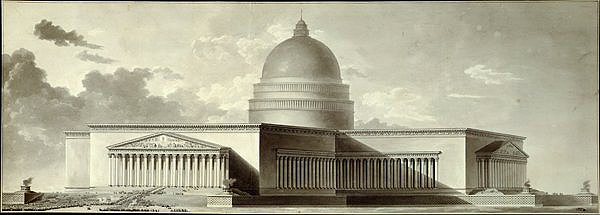From Architizer:
Whatever one’s politics, it is hard to not be impressed by the sheer audacity of the Jacobins, who during the years of the First Republic attempted to change things as fundamental as the calendar. For a few brief years, 1792 was known as “Year One.” Even God was renamed. Henceforth, He was to be called the “Supreme Being.”
In art and architecture, as opposed to politics, the French Revolution’s legacy is more ambiguous. Although Robespierre’s rhetoric, with its calls for a radical renewal of the nation along secular and democratic lines, seemed to anticipate 20th century modernists like Le Corbusier, the most radical years of the revolution — 1792 to 1794 — saw very little construction in Paris, much less an upheaval of the city’s visual language. If there is one visual aesthetic that is closely linked to the French Revolution, it is Neoclassicism, which was also popular in the years before and after the revolution.
Jacques-Louis David is the painter associated most closely with the Revolutionary years due to his elegiac painting “The Death of Marat,” which has forever linked a serene and saintlike image with the man who encouraged the sans-culottes to “devour the palpitating hearts” of the bourgeoisie. But David was not really a radical in aesthetics; he was equally at home, a few years later, painting portraits of Napoleon. (Read more.)
Share



















No comments:
Post a Comment